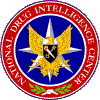ARCHIVED
![]() To Contents
To Previous Page
To Next Page
To Publications Page
To
Home Page
To Contents
To Previous Page
To Next Page
To Publications Page
To
Home Page

|
National Drug
Intelligence Center Milwaukee High Intensity Drug Trafficking Area Drug Market Analysis April 2007 Drug-Related CrimeThe distribution of powder and crack cocaine through criminal organizations and street gangs poses the greatest threat to law enforcement in terms of violent crime, especially firearms-related violence. Law enforcement officers have reported a distinction between violent crime as perpetrated by north side and south side gangs in Milwaukee. South side gang violence is typically perpetrated against rival gang members or peers as a result of turf warfare. North side gangs and criminals, however, are more apt to use violence to steal drugs, money, or weapons from other dealers. Dealers are especially vulnerable because they cannot report the robbery or assault to law enforcement officers without risk of discovery or seizure of their enterprise; thus, they tend to be heavily armed and fortified in their residences and to employ guards and/or lookouts for personal and private property protection, actions that create an added risk to law enforcement officers.
AbuseMarijuana is the most widely abused illicit drug in the HIDTA region; however, the societal and personal consequences of marijuana abuse are not comparable to those associated with the abuse of powder and crack cocaine, heroin, and other illicit drugs. The Milwaukee County Medical Examiner reports that in 2005 (the latest year for which data are available), 196 drug deaths occurred, 92 of which involved cocaine.1 Treatment agencies in the HIDTA region report an increase in opiate abuse, predominantly abuse of prescription opiates and heroin. Moreover, the Milwaukee County Medical Examiner reports that in 2005, more than half (103) of drug deaths involved prescription opiates, either alone or in combination with other drugs.2 (See Table 1.) The demographics of heroin and other opiate abuse indicate that there has been a change in the abuser population in Milwaukee. Law enforcement officials and treatment providers also report a decrease in the mean age of heroin users over the past few years as adolescents experiment with and abuse opiates. Additionally, law enforcement officials report that Caucasian males and females from suburban areas and smaller outlying towns have been coming to Milwaukee in increasing numbers to purchase heroin for personal use or for sale to friends and acquaintances.
Many opiate abusers in the HIDTA region reportedly progress from prescription opiate (e.g., oxycodone) abuse to the snorting of heroin and, finally, to the intravenous injection of heroin. Only 20 deaths were associated with heroin abuse in 2005, according to the Milwaukee County Medical Examiner; however, the Medical Examiner's Office reports that the low death rate should be attributed to first-response procedures by emergency medical services (EMS) personnel--not to a decrease in abuse. EMS providers in the region employ a first-response application of Narcan (naloxone), also marketed as Nalone and Narcanti, an injectable narcotic antagonist that immediately reverses respiratory arrest caused by a heroin or other opiate overdose.
Methamphetamine abuse is almost nonexistent in the HIDTA region; as a result, there is little demand for the drug. Law enforcement officials believe that the abundant supply and consistently low prices of powder and crack cocaine contribute to the user population's reluctance to experiment with or switch to methamphetamine. However, methamphetamine abuse occurs in areas bordering the HIDTA region. Ice methamphetamine is increasingly available in northern Wisconsin, where the drug is transported from the Minneapolis/St. Paul area. End Notes1 These data
reflect both drug-induced deaths (i.e., drugs directly caused the
deaths) and drug-related deaths (drugs contributed to the deaths). |
End of page.